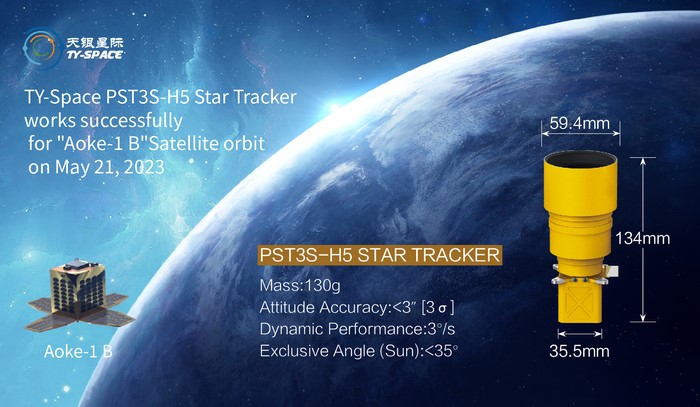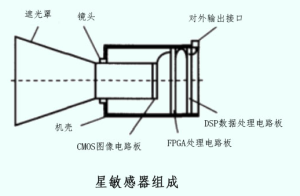
Star trackers are high-precision space attitude measurement devices that use stars as the reference frame and the sky as the working object. By detecting stars at different positions on the celestial sphere and solving them, they provide accurate spatial orientation and reference for aerospace vehicles such as satellites and spacecraft. They also have autonomous navigation capabilities like inertial gyroscopes, and have important application value.
The working principle of a star sensor is as follows: the image sensor captures an image of the starry sky within the current field of view, and the image is processed to extract the position (and brightness) information of the star in the observation field of view. The star recognition algorithm finds the corresponding matching of the observation star in the navigation star library, and uses these matching star pairs to calculate the three-axis attitude of the star sensor.

The overall structure of the star sensor includes: optical system, CMOS image circuit, FPGA processing circuit, DSP data processing circuit, mechanical structure, and other parts. In the image lens, the image is formed on the focal plane of the CMOS image sensor. The driving circuit in FPGA sends a timing control signal to the CMOS. After the CMOS operates normally, the image data is read and preprocessed, including data bit conversion and real-time star point subdivision positioning. Transfer the obtained star position and brightness information to a digital signal processor (DSP) for star map recognition and star target tracking, and finally output attitude information.

Star sensors typically include all sky sphere recognition working mode and star tracking working mode. In the all-sky working mode, the star sensor captures the star map within the field of view through an optical lens. After undergoing steps such as star centroid positioning, star map recognition, and attitude calculation, the attitude information is directly output. In star tracking mode, the star sensor utilizes prior attitude information to enter the star tracking algorithm module, and finally calculates the current attitude information through local star point centroid positioning and recognition.
So far, researchers have developed many different types of star sensor products and successfully applied them. During the research process, researchers found that by using a multi field of view star sensor design method, the field of view can be reduced without changing the detected magnitude, ensuring the attitude measurement accuracy of the star sensor.
Nowadays, autonomous celestial navigation has become an important field in spacecraft technology and a major trend for future development. As a high-precision attitude measurement instrument, star sensors will inevitably have good development and application prospects.
Send us a message,we will answer your email shortly!